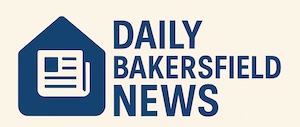In today’s fast-paced world, mounting pressure and endless to-do lists often lead to overwhelming stress. Fortunately, effective stress management doesn’t always require hours of meditation or elaborate routines. Simple breathing exercises, when practiced mindfully, can quickly restore calm and mental clarity. This article explores five powerful breathing techniques that help alleviate stress within minutes, supported by scientific research and practical insights for easy integration into daily life. Whether at work, commuting, or winding down, these exercises offer accessible tools to regain control and enhance overall well-being.
Understanding How Controlled Breathing Reduces Stress and Enhances Calm Headspace
Breathing is a fundamental autonomic process, yet when deliberately regulated, it wields significant influence over the nervous system. Conscious breathing practices activate the parasympathetic nervous system, which counters the body’s stress response by reducing cortisol levels and promoting relaxation.
Extensive research has demonstrated that even brief periods of mindful breathing can improve cognitive function, emotional regulation, and mood stability. This is partly due to increased oxygen flow supporting brain health and the modulation of heart rate variability (HRV), a marker of autonomic nervous system balance. Tools such as The Calm App and Insight Timer popularize these exercises, making stress relief widely accessible.
How Controlled Breathing Acts on the Body
Deliberate breathing impacts:
- Heart Rate: Slowing the breath controls heart rate, mitigating rapid heartbeat often experienced during anxiety.
- Muscle Tension: Promotes muscle relaxation by reducing sympathetic nervous system arousal.
- Brain Function: Enhances prefrontal cortex activity, improving focus and decision-making.
- Emotional Regulation: Facilitates regulation of stress-induced emotions like anger and frustration.
Mindfulness-based apps such as Sattva and Simple Habit incorporate breathing exercises combined with guided meditation, reinforcing the calming effect through audio prompts and breath tracking features. Engaging with these digital supports can encourage consistency and mindfulness.
Common Barriers and Tips to Enhance Practice
Some individuals may find initial discomfort or restlessness when focusing on breath. To ease into practice:
- Start with sessions lasting 2 to 5 minutes, gradually increasing duration.
- Create a quiet, comfortable environment or use headphones to minimize distractions.
- Pair breathing exercises with daily routines—like waiting in line or during breaks—to build habit.
- Use reminders delivered by apps or calendar alerts to prompt regular breathing breaks, crucial for sustained stress reduction throughout the day.
| Benefit | Impact on Stress | Supporting Techniques/Apps |
|---|---|---|
| Parasympathetic Activation | Reduces cortisol and heart rate variability | The Calm App, Breathwrk |
| Improved Mental Clarity | Enhances focus and cognitive function | Insight Timer, Breathe Easy |
| Muscle Relaxation | Decreases tension and promotes calm | Sattva, Simple Habit |
| Emotional Balance | Regulates anxiety and angry emotions | Breathe2Relax, Mindfulness App |
Mastering the physiological and psychological impact of breathing lays a foundation for stress resilience. To deepen this understanding, practitioners are encouraged to explore different breathing techniques described below, each offering distinct benefits and situational uses.
Power Breathing: Quick Inhales and Exhales for Instant Energy and Focus Boost
Power breathing, sometimes called “fast breathing,” consists of rapid inhales and exhales that stimulate the nervous system, leading to increased alertness and energy. Unlike slow-paced breaths aimed at relaxation, this method re-energizes and awakens the mind, making it especially useful during moments of sluggishness or pre-workload preparation.
Step-by-Step Power Breathing Guide
- Sit or stand with an erect posture to facilitate lung capacity.
- Take a quick, sharp inhale through the nose, filling only about half the lungs.
- Follow immediately with a forceful exhale through the mouth.
- Continue the cycle for 10 to 15 seconds.
- Pause briefly to notice sensations of increased alertness.
By triggering sympathetic nervous system activity, this exercise enhances oxygen availability and primes the brain for concentration. It is an effective break tool during afternoons when energy typically dips or before tasks that require heightened mental agility.
Applying Power Breathing Practically
- When feeling overwhelmed, step aside for a power breathing burst to disrupt spiraling anxiety.
- Use during creative brainstorming sessions to jumpstart cognitive functions.
- Combine with short walks or stretches to maximize revival effect.
| Characteristic | Benefit | Recommended Usage Time |
|---|---|---|
| Duration | 10-15 seconds | Morning, mid-afternoon, or before important tasks |
| Intensity | Rapid and forceful breaths | Whenever feeling lethargic or distracted |
| Physiological Effect | Activates alertness and energy boost | Before cognitively demanding activities |
Incorporating power breathing is straightforward, and pairing it with mindfulness apps like Breathwrk can support timing and consistency. Users have reported increased productivity and less mental fatigue, highlighting its practical value in managing daily energy fluctuations.
Belly Breathing: Harnessing Diaphragmatic Power for Deep Relaxation and Stress Relief
Belly breathing, or diaphragmatic breathing, engages the diaphragm to maximize lung capacity and activate a deep relaxation response. This technique counteracts shallow breathing patterns common under stress, promoting sustained calm and reduced anxiety levels.
How to Perform Belly Breathing Correctly
- Place one hand on the chest and another on the abdomen.
- Inhale slowly through the nose, focusing on expansion of the belly rather than the chest.
- Feel the abdomen rise while the chest remains relatively still.
- Exhale gently through the mouth, noticing the belly fall.
- Repeat the cycle for 1 to 2 minutes, gradually slowing breaths.
Regular practice improves vagal tone, a critical factor in autonomic nervous system regulation, contributing to emotional regulation and lowered physiological stress markers. It’s especially effective before sleep or during moments of acute tension.
Integration Into Daily Life
- Use before bedtime to improve sleep quality, as supported by sleep hygiene studies.
- Incorporate during breaks at work for quick re-centering.
- Pair with guided sessions on apps like Breathe Easy or Mindfulness App to deepen awareness.
- Practice lying down first, then gradually advance to seated or standing positions.
| Aspect | Effect | Suggested Practice Frequency |
|---|---|---|
| Duration | 1–2 minutes initially | 3-4 times daily |
| Focus | Abdominal expansion and contraction | Progressively longer sessions as comfortable |
| Benefits | Reduces anxiety, aids sleep, lowers stress hormones | Consistent daily use recommended |
Scientific evidence underscores belly breathing’s role in improving heart rate variability and lowering blood pressure. Detailed instructions and motivational reminders from apps such as The Calm App can significantly enhance adherence and benefits.
Mastering Pursed-Lip Breathing for Controlled Calm in Stressful Situations
Pursed-lip breathing slows breathing rate, improves ventilation, and extends exhalation. This technique moderates racing heartbeat and induces calm, making it highly practical for moments of acute stress or anxiety. Because it can be done discreetly, pursed-lip breathing is suitable for public settings where overt relaxation may not be feasible.
Technique Breakdown
- Relax your neck and shoulder muscles.
- Inhale slowly through the nose for a count of two with lips closed.
- Purse lips as if blowing out a candle.
- Exhale gently and steadily through pursed lips for a count of four.
- Repeat the pattern, prolonging exhalation duration as you grow comfortable.
Practicing pursed-lip breathing supports oxygen exchange and prevents air trapping in the lungs, a common issue during shallow, rapid breathing episodes linked to stress or health conditions.
Situational Applications and Benefits
- Use during stressful commutes or traffic congestion to manage frustration.
- Employ before presentations or meetings to steady nerves.
- Incorporate in the management of respiratory conditions, enhancing breathing efficiency.
| Characteristic | Purpose | Recommended Situations |
|---|---|---|
| Breathing Rate | Slows exhalation and overall respiration | Stressful or anxiety-provoking environments |
| Lip Position | Pursed as if blowing out a candle | Discreet practice in public or workplace |
| Duration | Practiced multiple times daily | Before and during stressful events |
Clinics often recommend pursed-lip breathing in conjunction with behavioral relaxation techniques, available in self-care routines such as those outlined in detailed stress management resources. Consistent practice leads to measurable reductions in anxiety and improved respiratory efficiency.
Box Breathing: Structured Rhythm for Instant Relaxation and Mental Grounding
Used by elite performers and military units, box breathing offers a straightforward, repeatable pattern that induces profound calm quickly. This technique balances oxygen and carbon dioxide levels, stabilizes heart rate, and enhances focus under pressure.
The Four-Step Box Breathing Pattern
- Inhale deeply through the nose for a count of four.
- Hold breath comfortably for a count of four.
- Exhale slowly through the mouth for a count of four.
- Hold breath again for a count of four.
- Repeat the cycle for 1 to 2 minutes maintaining even timing.
Box breathing trains the nervous system to toggle away from the fight-or-flight response, fostering a state of steady composure. Its rhythmic nature also facilitates mindfulness and a greater present-moment awareness, beneficial for both beginners and experienced practitioners alike.
Using Box Breathing in Daily and High-Stakes Settings
- Implement before engaging in public speaking or high-stress meetings.
- Practice during breaks to recalibrate focus and reduce tension.
- Integrate with smart wearables or apps like Breathe2Relax for guided pacing and feedback.
| Phase | Duration (counts) | Effect |
|---|---|---|
| Inhale | 4 | Oxygen intake and calm preparation |
| Hold Breath | 4 | Nervous system stabilization |
| Exhale | 4 | Release tension and carbon dioxide |
| Hold Breath | 4 | Maintains balance and focus |
Box breathing’s simplicity ensures accessibility for corporate environments and personal life alike. Apps dedicated to mindfulness and breathing, including Mindfulness App and The Calm App, often feature box breathing modules supporting user engagement and stress relief.
4-7-8 Breathing: The Natural Tranquilizer to Quiet Anxiety and Promote Restful Sleep
Developed by Dr. Andrew Weil, the 4-7-8 breathing technique is often described as a natural tranquilizer that quickly calms the nervous system and mitigates anxiety. It is also highly effective for facilitating deep, restorative sleep.
Performing 4-7-8 Breathing
- Inhale quietly through the nose for a count of 4.
- Hold the breath comfortably for a count of 7.
- Exhale completely through the mouth with a whooshing sound for a count of 8.
- Repeat this cycle three to four times, emphasizing smooth and relaxed breaths.
By elongating the exhale, this technique encourages full release of carbon dioxide and fosters parasympathetic dominance, key in calming hyperaroused states. Many practitioners report rapid anxiety reduction and enhanced sleep quality when integrated into evening routines.
Practical Tips and Applications
- Begin your nightly wind-down routine with 4-7-8 breathing to promote faster sleep onset.
- Use in moments of heightened stress or panic to regain composure.
- Combine with apps like Simple Habit or Insight Timer offering guided 4-7-8 sessions.
- Practice in a quiet, comfortable environment to maximize benefits.
| Step | Count Duration | Function |
|---|---|---|
| Inhale | 4 seconds | Controlled oxygen intake |
| Hold | 7 seconds | Oxygen absorption and nervous system balancing |
| Exhale | 8 seconds | Stress release and parasympathetic activation |
Ongoing research underscores 4-7-8 breathing as a highly effective adjunct for managing sleep disorders and chronic anxiety. For sustained improvement, consistent practice is essential. For listeners seeking structured sessions, resources like mental health apps featuring breathwork provide accessible tools to build this habit.

